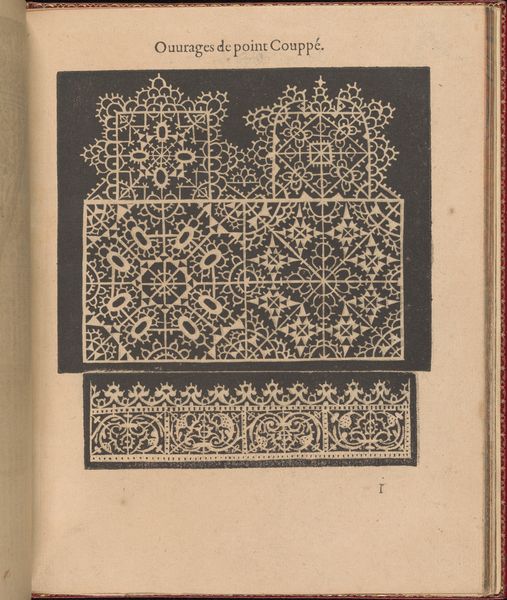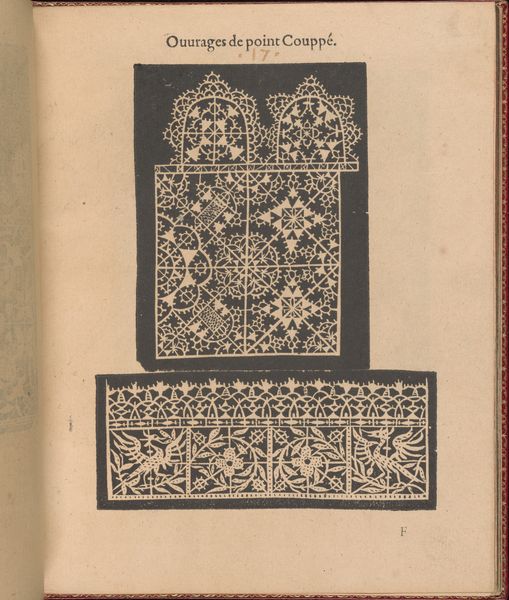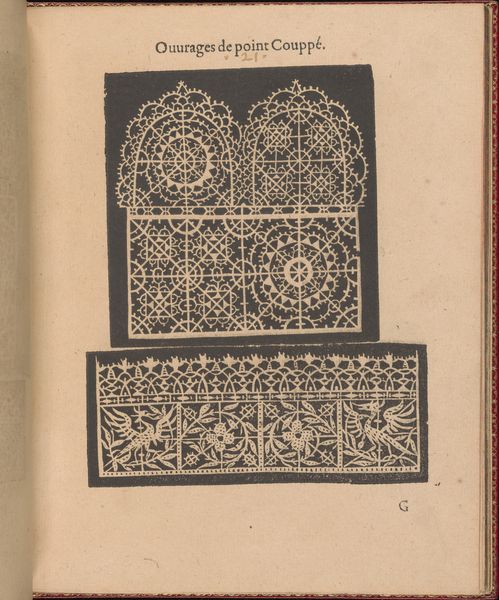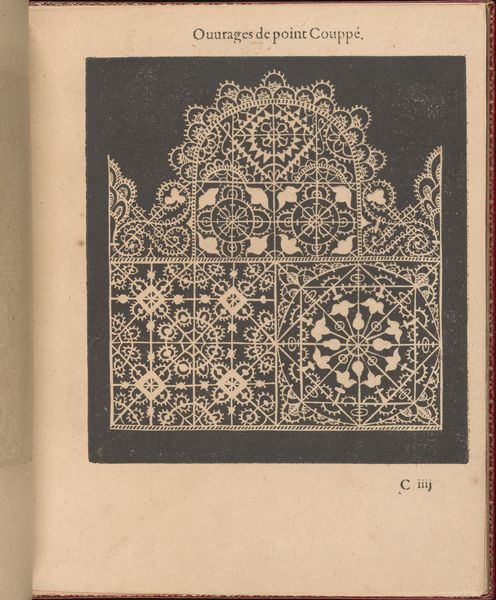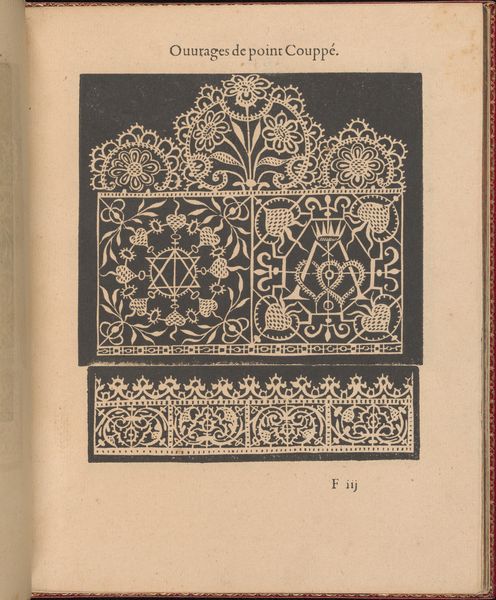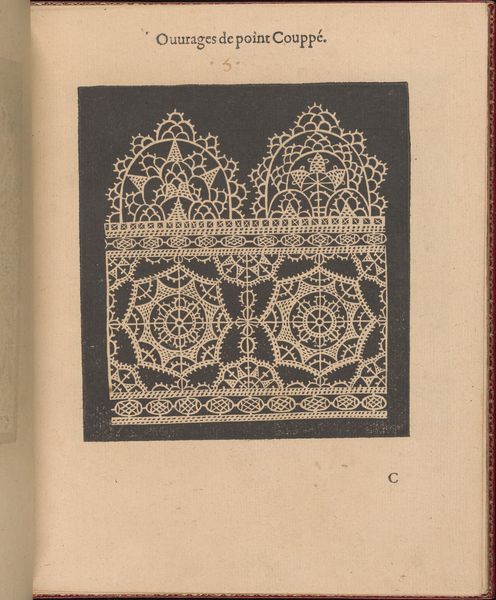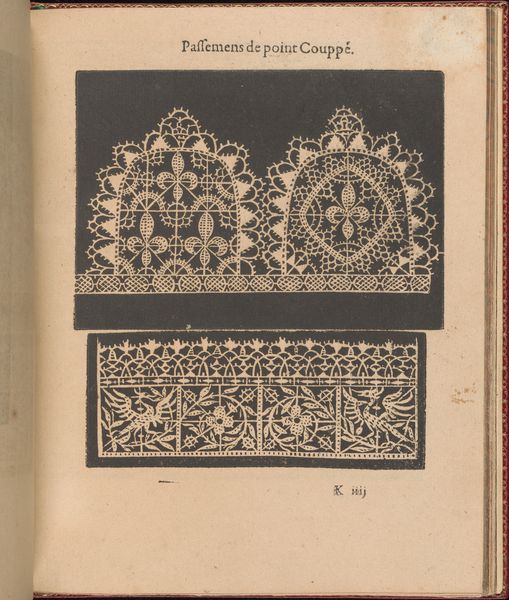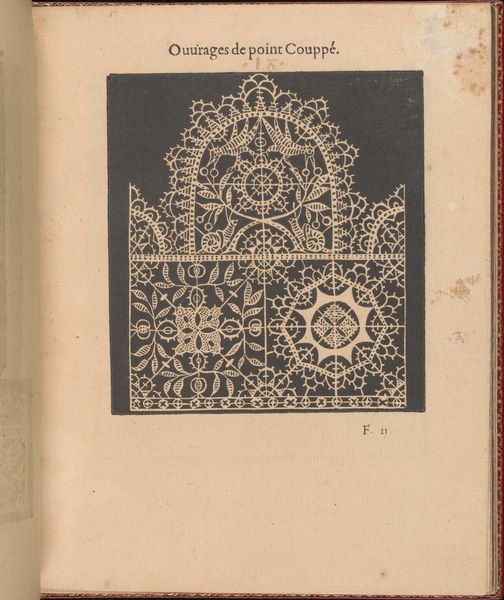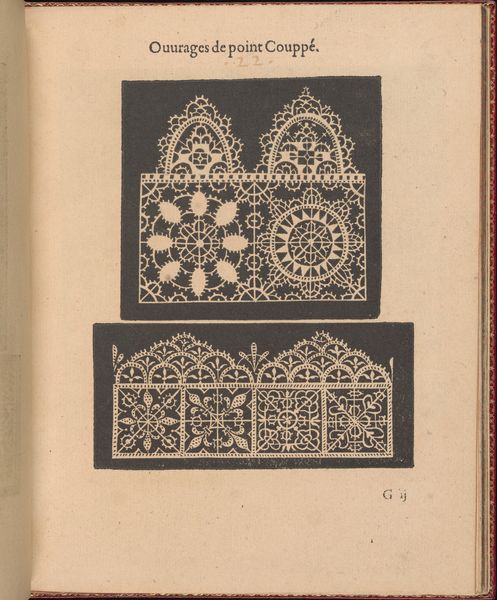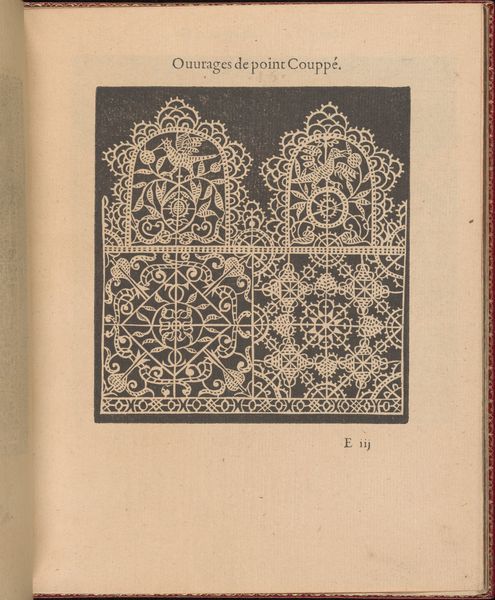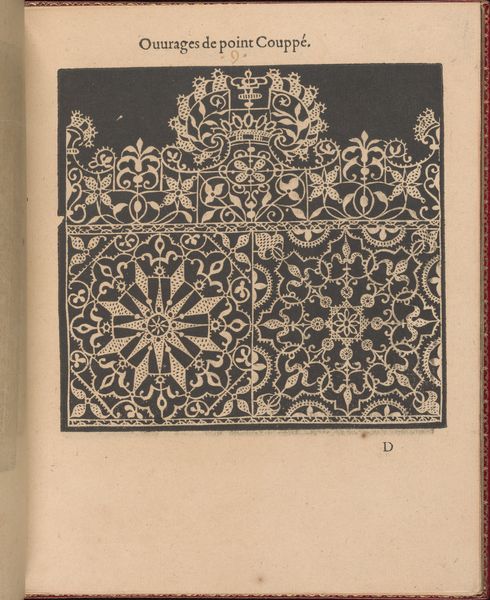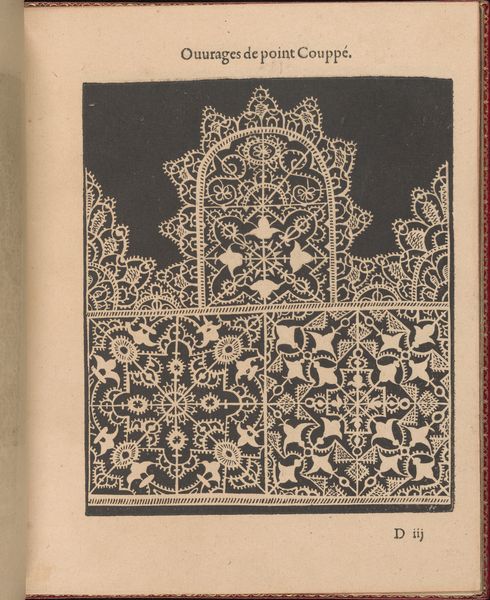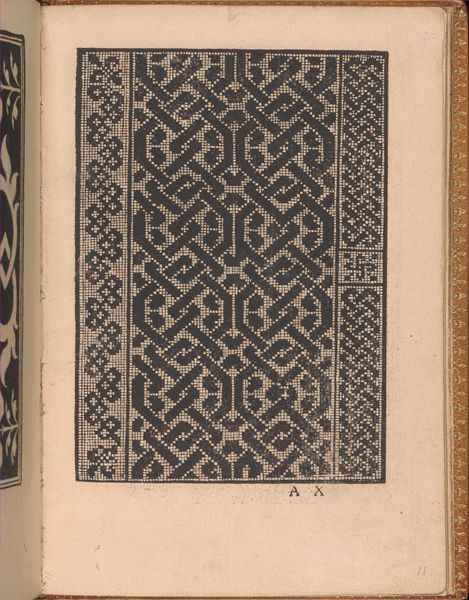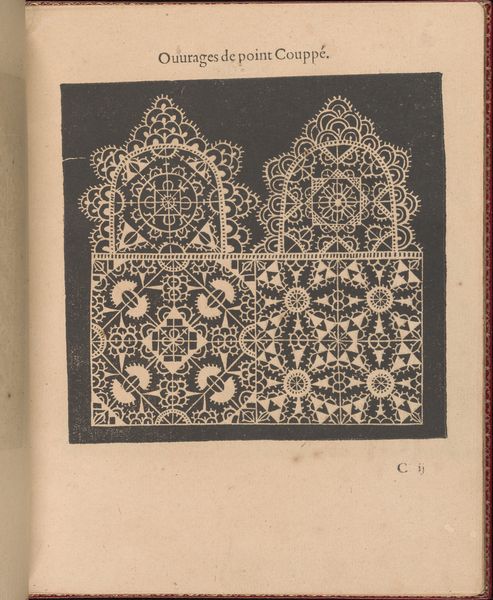
Les Singuliers et Nouveaux Portraicts... page 24 (recto) 1588
0:00
0:00
drawing, graphic-art, print, engraving
#
drawing
#
graphic-art
# print
#
geometric
#
decorative-art
#
engraving
Dimensions: Overall: 8 1/16 x 6 5/16 in. (20.5 x 16 cm)
Copyright: Public Domain
Curator: Standing here, bathed in the soft light, what's the first word that pops into your head gazing at this dizzying page of lace patterns? Editor: “Mathematical.” It's rigid and precise but I can also imagine the tedious labor and the communities involved in the means of production. Curator: Apt. This engraving comes from Federico de Vinciolo’s "Les Singuliers et Nouveaux Portraicts…" published in 1588. It’s not just an image; it’s a template for the "point coupé" style of lace, immensely popular at the time. And honestly, it gives me the shivers. Editor: Shivers? But it's so orderly. For the material, the "point coupe" lace work was really a laborious undertaking where threads are pulled and cloth is cut out so to produce intricate designs, practically by hand! Curator: Precisely! It represents control—geometric order imposed upon chaos. It’s almost… unsettling in its perfection. I look at it and think about the anonymous hands replicating these designs. Do you think there was room for expression? Editor: Oh, undoubtedly! Look closer, beyond the imposed grid; the subtle variations are in everything we touch and do! Every piece carries a trace, and speaks of social conventions of luxury and adornment of its time. But, as an engraver's print, was this sort of the Ikea instruction of lace? Curator: Maybe, but for the elite. What is compelling about these old manuals is the tension, that is felt to me anyway, between craft and artistic endeavor. Even with the grid, you can just feel some sort of secret longing whispering beneath the surface of all that perfectly neat symmetry. Editor: In other words, "handmade" does not just mean imperfect... The engraving process itself would’ve demanded a certain precision, influencing the look of the finished lace and spreading particular styles, perhaps diminishing, perhaps allowing access and appreciation. Curator: It makes you think of all the invisible, mostly female hands involved. This page of geometric forms has opened a door into understanding production methods, consumption, design history. A small opening can show a rich cultural vista. Editor: So the question, dear visitor, remains—do you see a cage of restriction, or the freedom of design awaiting its time to bloom again?
Comments
No comments
Be the first to comment and join the conversation on the ultimate creative platform.
